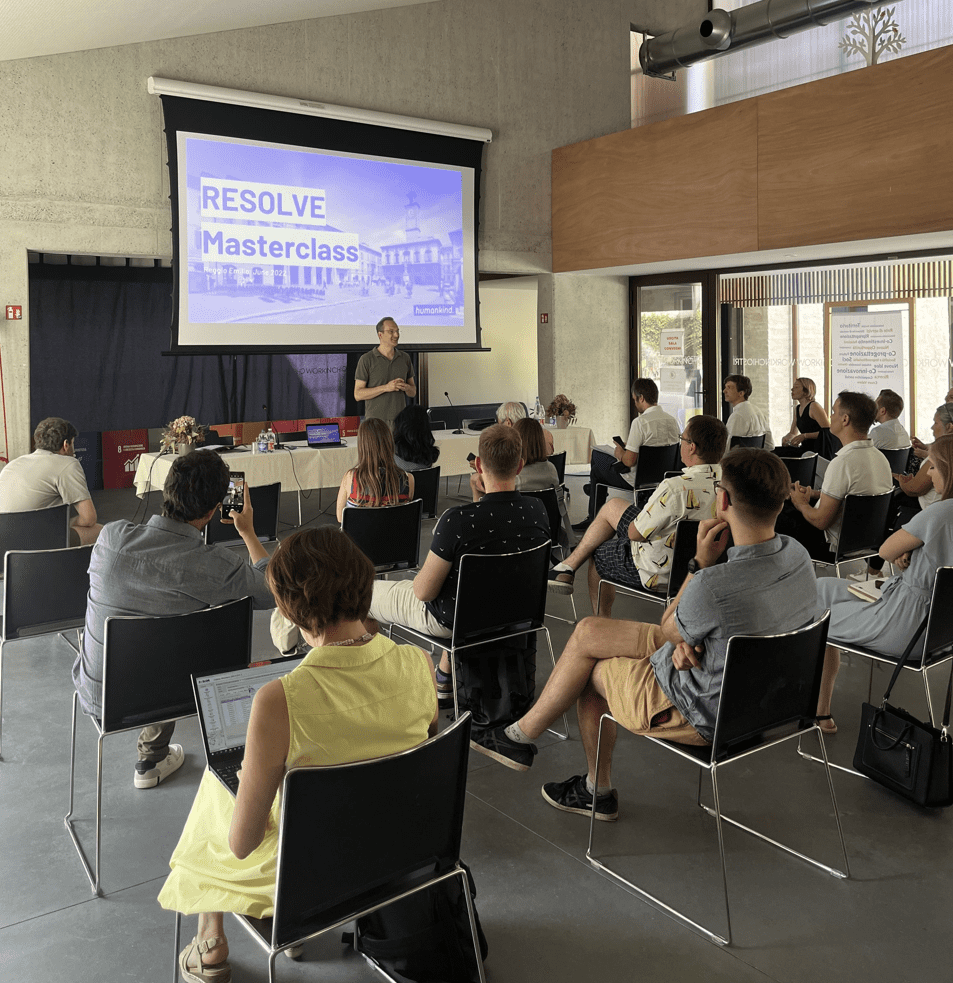On the 19 and 20 of April, Reggio Emilia will host the last RESOLVE Peer Review.
Experts coming from the Netherlands, Italy, Portugal, Slovenia and Belgium will provide advice regarding the plan of the City to widen the pedestrian friendly area in the city centre, the development of the 2nd generation Mobility Plan following the SUMP guidelines, and the strategies for the improvement of retail-related mobility in the city.
BACKGROUND
Reggio Emilia is a middle sized city in Emilia Romagna Region, in the northern part of Italy, with about 170,000 inhabitants. In 2008 the City Council approved the Sustainable Urban Mobility Plan (in Italian PUM), a document designed as the strategic plan for the development of urban mobility policies defining three main objectives:
• environmental: reduce the environmental impact of the mobility system
• functional: reduce traffic congestion
• social: increase safety and road quality.
Fully integrated with the other strategic documents (urban and land use planning, air quality plan, traffic urban plan, etc...), it sets the transport priorities of the city and consists in a set of instruments and integrated policies and short, medium and long term strategic interventions towards a reduced personal car use with high investments on environment, mobility and safety.
The main themes identified to achieve the objectives were:
1. increasing cycling, through infrastructural and non-infrastructural interventions
2. development of collective passenger transport at urban and suburban level
3. reducing car traffic, both with traffic and parking management and with a more rational use of roads
4. increase safety for all modes of transport, with traffic calming interventions in a wide number of areas of the city.
Since the approval, not all SUMP strategies have been developed at the same level: the cycling and the traffic calming strategy followed a proper implementation, parking regulation is fully implemented, while public transport strategies and innovation measures (i.e. ICT) are still not properly implemented.
In 2017 Reggio Emilia will undergo two very important developments for the mobility system of the city: a new project for the pedestrianisation of the city centre is currently under implementation, and in parallel the Mobility Department is working on the 2nd generation Mobility Plan following the SUMP guidelines elaborated by the European Commission.
PEER REVIEW
Within RESOLVE, Reggio Emilia is seeking for innovative strategies to tackle the current challenges in the field of transport with cost efficient measures aimed at discouraging private car use in favour of walking, cycling and public transport, and reduce congestion and emissions, with a focus on the city centre.
In particular, the advice of the experts will be very important to improve the process of the SUMP and the widening of the pedestrianisation in the city centre.
The SUMP's 6 main themes have been set and approved by the City Council in December 2016:
- mobility
- infrastructures
- local public transport
- reduction of speed
- cycling and walking
- smart and clean mobility.
The SUMP driving lines are all integrated in a framework of regeneration process of public spaces, with a gradual reallocation of road space from cars. With the two monitoring activities carried out to monitor the results of the 2008 PUM, the City discovered that a clear trend has emerged – car use is going down, while walking, public transport and cycling are rising, with cycling having the most relevant growth in the modal share at the expense of the car. The objective within the 2017 SUMP is to foster this trend, reaching a 50-50 target by 2030 with a 50% of travels made by car (-25%) and a 50% of sustainable travels, with an increase in the share in the modal split in particular for the use of public transport (+50%) and cycling (+40%). The advice of the experts will be very useful to understand which measures can be more effective to reach these goals and how innovation, ITS and sharing mobility can foster the use of sustainable modes of transport.
The widening of the pedestrian area will be completed in the following months, therefore the City of Reggio Emilia would like to undestand from the experts how to maximise the environmental, economical and social impact of pedestrianisation, how to increase the attractiveness of the city centre for businesses and residents, and how to manage logistics operations with the future access regulation.


